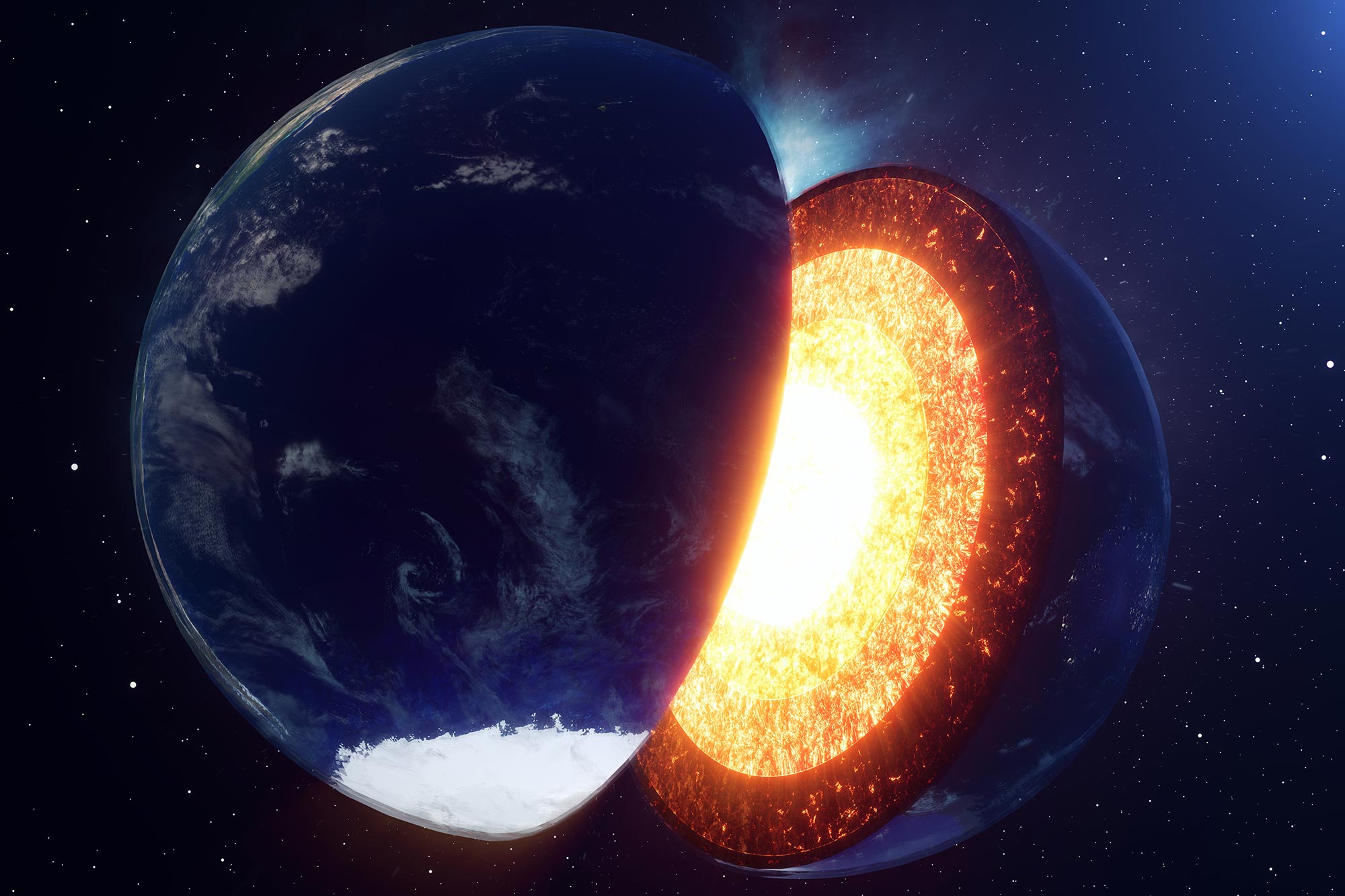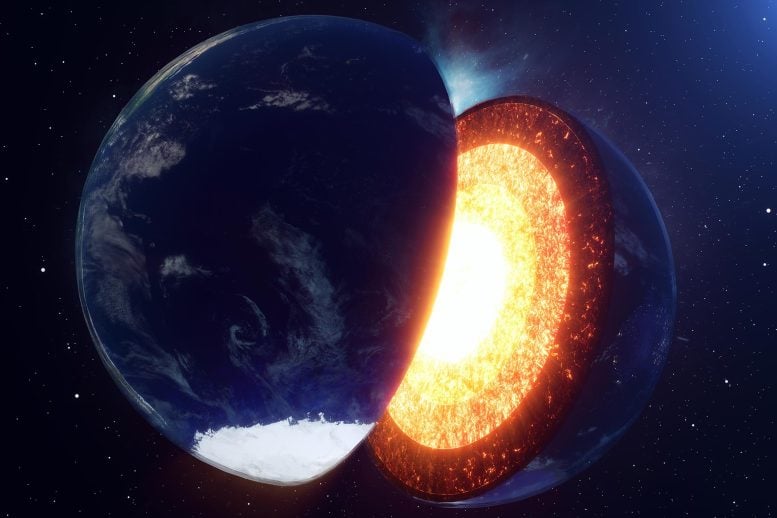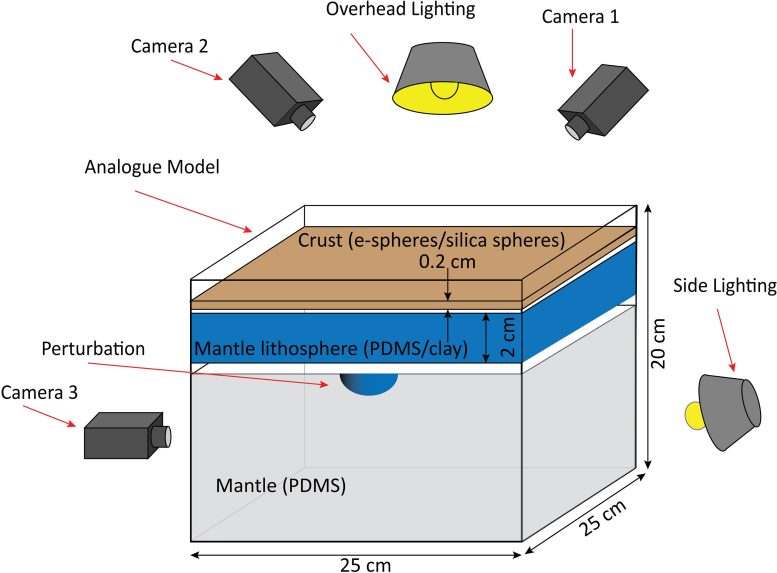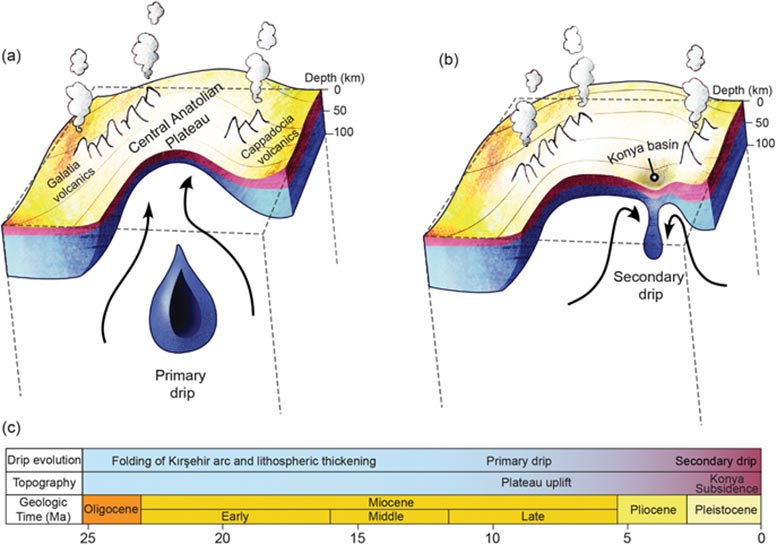

Türkiye’s Konya Basin is reshaped by lithospheric dripping, causing dense rock fragments to sink and alter the landscape, a phenomenon with wider implications for planetary geology, as evidenced by a University of Toronto study.
New satellite data show that the Konya Basin in the Central Anatolian Plateau of Türkiye is continually being reshaped over millions of years, according to a recent analysis led by the University of Toronto.
The team’s experimental simulations — combined with geological, geophysical, and geodetic data — explain the mysterious sinking of the basin within the rising plateau interior. Their findings support the notion of a new class of plate tectonics with implications for planets that do not have Earth-like plate tectonics, such as Mars and Venus.

Implications of Lithospheric Dripping
The study, recently published in Nature Communications, reveals the sinking in the region is due to multi-stage lithospheric dripping — a phenomenon named for the instability of rocky material that makes up Earth’s crust and upper mantle. As dense rock fragments beneath the surface detach and sink into the more fluid layer of the planet’s mantle, major landforms such as basins and mountainous folding of the crust form at the surface.
“Looking at the satellite data, we observed a circular feature at the Konya Basin where the crust is subsiding or the basin is deepening,” says Julia Andersen, a PhD candidate in the Department of Earth Sciences in the Faculty of Arts & Science at U of T and the study’s lead author. “This prompted us to look at other geophysical data beneath the surface where we saw a seismic anomaly in the upper mantle and a thickened crust, telling us there is high-density material there and indicating a likely mantle lithospheric drip.”

Tectonic Processes and Experimental Insights
The results echo a similar investigation by the researchers into the formation of the Arizaro Basin in the Andes Mountains of South America, suggesting the phenomenon can occur anywhere on the planet and explains tectonic processes typically found within mountain plateau regions.
Past studies show the Central Anatolian Plateau has risen by as much as one kilometer over the past 10 million years because of this phenomenon of lithospheric dripping.
“As the lithosphere thickened and dripped below the region, it formed a basin at the surface that later sprang up when the weight below broke off and sank into the deeper depths of the mantle,” says Russell Pysklywec, a professor in the Department of Earth Sciences and a co-author of the study. “We now see the process is not a one-time tectonic event and that the initial drip seems to have spawned subsequent daughter events elsewhere in the region, resulting in the curious rapid subsidence of the Konya Basin within the continuously rising plateau of Türkiye.”
Andersen says the new findings suggest a connection between plateau uplift and basin formation events through the evolution of primary and secondary lithospheric removal. “Essentially, subsidence is occurring alongside the ongoing uplifting of the plateau.”

Laboratory Simulations and Observations
Andersen and study co-authors, including colleagues at Istanbul Technical University and Çanakkale Onsekiz Mart University in Türkiye, arrived at their findings after recreating the dripping process in laboratory experiments and analyzing their observations.
They built laboratory analog models to establish how the process may have unfolded based on the data provided by the new measurements, filling a plexiglass tank with polydimethylsiloxane (PDMS) — a silicone polymer fluid approximately 1,000 times thicker than table syrup — to serve as Earth’s fluid lower mantle, adding a mixture of PDMS and modeling clay to replicate the upper-most solid section of the mantle, finishing with a sand-like layer on top made from ceramic and silica spheres to serve as Earth’s crust.
The researchers activated the model by inserting a high-density seed into the PDMS and modeling clay layer, to initiate a drip that was subsequently pulled downward by gravity. A set of cameras were positioned above and beside the tank to record any changes over time, capturing a high-resolution image roughly every minute.
“Within 10 hours, we observed an initial phase of dripping, which we call a primary drip. After that primary drip touched the bottom of the box, we saw a second drip had begun to sink to the bottom after 50 hours,” says Andersen. “Both the primary and secondary drip were not causing any horizontal deformation in our artificial crust, which we expect is typically associated with a mantle lithospheric drip.”
The researchers already knew that the primary drip had caused changes in surface topography of the experiment, and wanted to know if the secondary drip would have any effect on the surface since it was a smaller sized drip than the primary drip. “What we noticed was that over time, this secondary drip did pull the crust downward and started to create a basin, despite no horizontal movements in the crust at the surface,” Andersen says. “The findings show these major tectonic events are linked, with one lithospheric drip potentially triggering a host of further activity deep in the planetary interior.”
Reference: “Multistage lithospheric drips control active basin formation within an uplifting orogenic plateau” by A. Julia Andersen, Oguz Hakan Göğüş, Russell N. Pysklywec, Ebru Şengül Uluocak and Tasca Santimano, 13 September 2024, Nature Communications.
DOI: 10.1038/s41467-024-52126-7